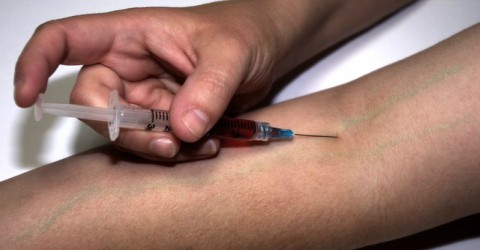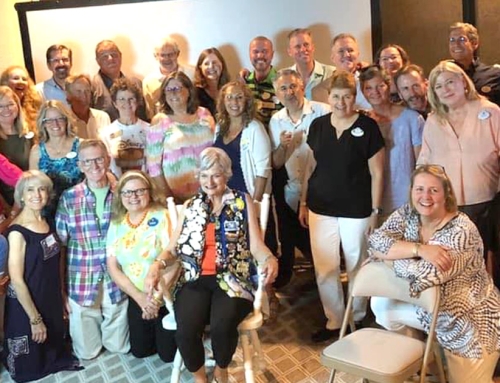
One of the key things we teach our clients to use in every patient and employee interaction is our technique called, Human-Business-Human® Why? Because it works.
This story has a happy ending, but it didn’t start out that way.
I took my 6-year old daughter for a blood draw this morning. This was her third visit to Quest in the past five months, and since the first two went well, she wasn’t scared at first….
We arrived for our appointment; check-in was quick and the wait wasn’t too long – about fifteen minutes or so.
But then I noticed we got Rosa. Again.
We had Rosa back in late July with my 10-year old daughter, who has diabetes, and Rosa did not make us feel comfortable.
Back then, Rosa was all business and no “human”. She didn’t say ‘good morning’. No smile. No softness or “from-the-heart tenderness” was shown to my daughter. And she didn’t talk to my daughter (except to threaten her). She only spoke to me. My daughter started to cry even before being touched. Rosa threatened to get another team member to hold her down if she didn’t calm down.
She didn’t calm down.
My gut told me to refuse, but I didn’t know how to do so appropriately. Rosa got another team member to hold her arms, while my daughter sat on my lap. She did get the blood drawn, but not happily by any of us. And at the end, she said nothing. No sticker, no ‘have a nice day’, nothing at all. We just walked out.
This time, we had Rosa for my six-year-old. Again, no ‘hello’, just straight to the business at hand: THE NEEDLE.
My younger daughter was brave and not crying, until Rosa stuck her – and missed the vein. She proceeded to dig around with the needle to try to get it in. She moved that needle back and forth a good five or six times while my daughter cried more and more. It was painful for me to watch, so finally, I said, “Let’s stop… we’ll go get a drink of water and see if that helps.” AFTER I said that, she finally pulled the needle out. In a blaming tone, she said to me, “Didn’t you give her any water this morning?”
In fact, I had given her a big glass at bedtime last night. Having been to lots of doctors recently and lots of Quest labs for blood work, I knew Rosa wasn’t as good as others. Then Rosa repeated her question to me about the water two more times. I chose to keep quiet because I didn’t feel she should be blaming me. In between questioning me, she said a few times, “Well, the vein kept moving around.” She blamed me for the lack of water and the vein for moving around. She did not seem to see that maybe her skills were not sufficient for the small veins in a six-year-old.
I went back to someone in billing and explained that my daughter had really tiny veins, and we needed their best person to get her blood. She asked if someone had already tried, and I told her Rosa had. She asked us to wait a couple of minutes while she worked on it. We drank even more water while waiting. Rosa came back out and asked if we were ready, and my daughter shook her head no.
I will never let Rosa draw our blood again.
But stay with me – this story has a happier ending…
A minute later, a male nurse named Rony asked us to follow him. We did.
He was friendly. He said hello. He asked my daughter what grade she was in and what school she attends.
He got the vein on the first try.
My daughter did not cry, as it didn’t seem to hurt her as much.
He spoke to her the whole time the blood was coming out. And then when he was finished, he gave her a bright orange band-aid and a sticker.
Then he asked if I needed a note for school. I said, “Yes, please. I’m so glad you offered because I forgot to ask!” (Rosa had not offered a note for school on either visit). He smiled at the beginning and end and wished us a nice day when we left. He made us feel comfortable with the procedure. He had both the clinical skills to hit the vein and the human side of the interaction. Rony was terrific!
********************************************************************************************
Our Human-Business-Human® is simple and it works. Here’s how.
- HUMAN: Begin every patient and employee interaction “on the human” by making eye contact, smiling, making a personal connection, and telling the patient what you plan to do.
- BUSINESS: Conduct the business or clinical procedures at hand. The first nurse in this story was all about business – no human at all. And it was a miserable experience for me and my daughter.
- HUMAN: Exit on the human. The second nurse gave my daughter a colorful bandage, smiled reassuringly, and then asked if we would need a note for school. The first nurse? Once the blood was drawn, she left. Curtly and abruptly. There was nothing human about her approach at all.
The beauty of the Human-Business-Human® approach is that it takes virtually no extra time – but it can make all the difference to a patient and their family.
This video below is a great example of Human-Business-Human® in action. You’ve probably seen it. Note how the nurse opens by talking to his patient about her drawing. They share a laugh and then he conducts the business at hand. What’s so special about this video is that even during the business or clinical part of his work, he still made time for the human. The song they sing is reassuring, light-hearted, and just distracting enough to counter some of the negative effects of getting her medicine. Brilliant.
So how can you use the Human-Business-Human® approach throughout your day?






Leave A Comment